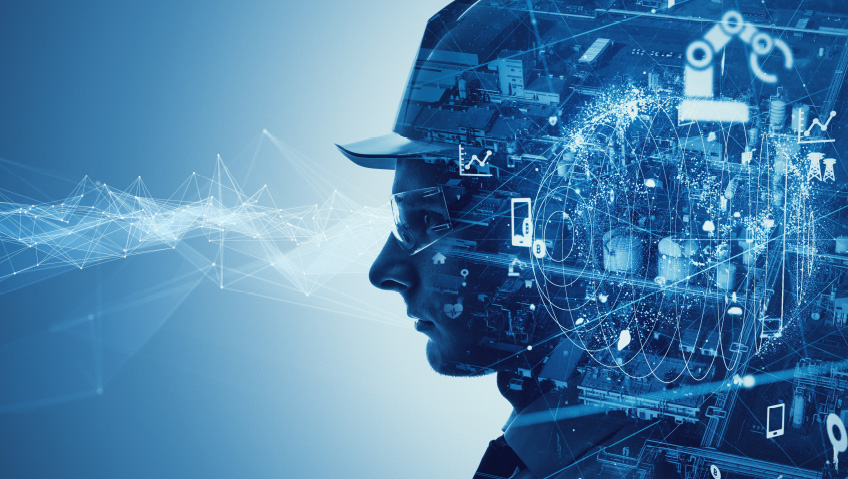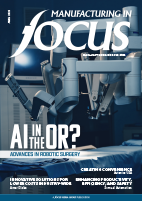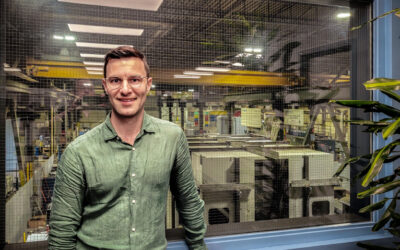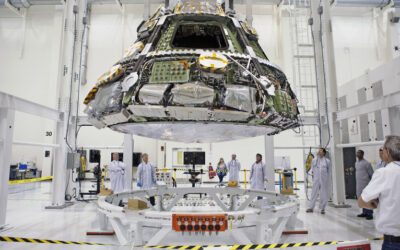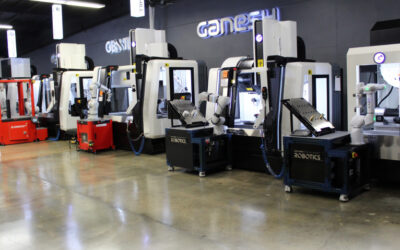Industrial automation—once confined to the pages of science fiction novels—has become a reality in manufacturing plants throughout the world. Computers, machines, and information technologies can now manage tasks in place of humans to create the factory of the future.
Ford transformed production methods when he introduced the moving assembly line in 1913 and helped usher in the modern factory. The system slashed the time to build a car, but left workers stressed by the strict timing and bored by the repetition. Many left the company for traditional factories that gave workers a variety of tasks, Ford’s corporate website reports. Already, the need for automation of repetitive tasks was evident.
By the 1920s electricity brought new possibilities to factories and sped up production. In the 1930s Japanese manufacturers led the modernization charge, developing equipment including the first micro-switch to facilitate automation in their factories. Elektro, often considered the world’s first robot, made his debut at the 1939 World’s Fair. The seven foot tall, 250-pound contraption wowed fairgoers with his 700-word vocabulary, blew up balloons, walked, and smoked cigarettes.
After WWII, allied forces launched an industrial rebuilding program in Japan. While the rest of the world continued to manufacture using traditional methods, allied efforts had to start from scratch in some of the nation’s war-ravaged cities and implemented the newest, most advanced technologies—rebuilding and continuing Japan’s pre-war advances. The use of modern production methods led to a Japanese manufacturing boom and helped the nation’s automotive industry flourish, eventually becoming a global leader.
Throughout the 1940s and 1950s, the development of numerical control (NC)—the control of a system or device using numbers, letters, or symbols to input data—unleashed new possibilities for the creation of industrial robots. George Devol is credited with the creation of the first industrial robot in 1954. The machine transferred objects from one location to another across a distance of over ten feet. Eight years later Mr. Devol’s company, Unimation, sold a model to General Motors, the first major manufacturer to utilize an industrial robot.
Automation technology improved steadily until it exploded in the 1980s. That decade saw a dramatic increase in the use of and advancements in industrial robots. American automotive manufacturers coined the phrase lights-out manufacturing as they scrambled to find a way to compete with the Japanese automotive industry. The hope was to create a factory that ran on its own—humans could just switch off the lights and walk away. While this ideal remains yet to be achieved, the potential for industrial automation has continued to increase, as have the steady advancements. Today, robots that handle repetitive tasks or jobs requiring precision dominate many assembly lines, particularly those within the automotive industry.
The primary advantage of industrial automation is obvious: lower operating cost. Manufacturers save on wages and benefits because machines operate themselves. And, of course, there is increased productivity. Robots can be programmed to do any task without requiring time consuming training. Automated machines do not take breaks, vacations, or holidays. They keep going 24/7 nonstop. And, automated machines are more reliable than traditional ones. When they do fail, repairs tend to be less expensive than with human-operated machinery. Engineers armed with computers can troubleshoot a problem with a few strokes of a keyboard and can usually solve it just as easily.
Safety is another important consideration. Automated machines can do dangerous jobs that put humans at risk. Or, industrial robots can handle jobs that humans find highly repetitive and onerous. Whatever the job, automated machines will do it accurately every time. There is no variance in performance. Quality is consistently high.
A notable disadvantage is the initial cost that automation requires. Another is that employees may lose their jobs to automation. There is much speculation as to what the long term impact on the average worker and the economy as a whole will be as automation increases—with some crying the sky is falling and others insisting automation will not replace workers en mass—but it is safe to say the jury is still out. For now, however, most automation requires human oversight and at least some level of interaction, ensuring that a sizable number of factory jobs are secure. Some economists even predict that automation will create more jobs than it will replace.
The long-term impact of automation is up for debate, but the fact that industrial robots are here to stay is clear. We can expect the factory environment to become more efficient, precise, and predictable as we move forward. New technology will continue to improve automation’s benefits and accessibility. We can also expect the purpose of automation to shift as technology advances. Traditionally, the goal of automation was primarily to lower production costs, but today’s trend is toward versatility, reliability, and precision. Machines simply do not make the errors that human hands do—no matter how long they’ve been at the job without a break.
Advances in Machine Learning (ML) and Deep Learning (DL) will create intelligent robots that can adapt to their surroundings and conditions, allowing one machine to do multiple jobs. These industrial robots will be more autonomous than current models and will be able to communicate better with technicians and other robots.
The Internet of Things (IoT) will continue to play a huge role in industrial automation. This technology controls and monitors objects through the Internet, allowing manufacturers to network hundreds or even thousands of devices together. This simplifies processes by streamlining them into one system, lowers hardware costs, and allows easy expansion of operations.
IoT is particularly beneficial when it comes to prevention. There is no need for a human to oversee automated machinery onsite when the machine monitors itself. Technicians simply check the machine’s status on their smartphone and receive alerts of any potential malfunction before the machine fails. Manufacturers save on labor costs and catch a problem before it shuts down production lines.
One potential drawback of IoT is security. As more and more factories are networked and rely on machines running smoothly with little human oversight, operations become more vulnerable to hacking. Manufacturers will need to be proactive against cyber threats with up-to-date security measures including authentication processes and continuous monitoring for suspicious activity.
Big data is another factor pushing industrial automation forward. Manufacturers have been storing vast amounts of production data for years, but until recently many have not really known what to do with all that information. Now, there is software available to help manufacturers make sense of that wealth of data, rather than getting bogged down in it. Effectively analyzing this data will help the industry develop smarter manufacturing and better automation solutions.
A range of cutting edge technologies is currently in the works that will push automation to the next level. Moving forward, expect to see nanotechnology take center stage, with clever gadgets including nanotech sensors able to monitor virtually anything and nanoscale assembly systems that can fashion impossibly small components. Wireless capabilities will continue to improve, with more machine-to-machine networking and greater access to information and remote monitoring. Industrial robots will become even more autonomous, boasting the ability to make decisions and troubleshoot.
We’ve come a long way since Ford installed his assembly line—and will go much farther, judging by the potential of burgeoning technology.

